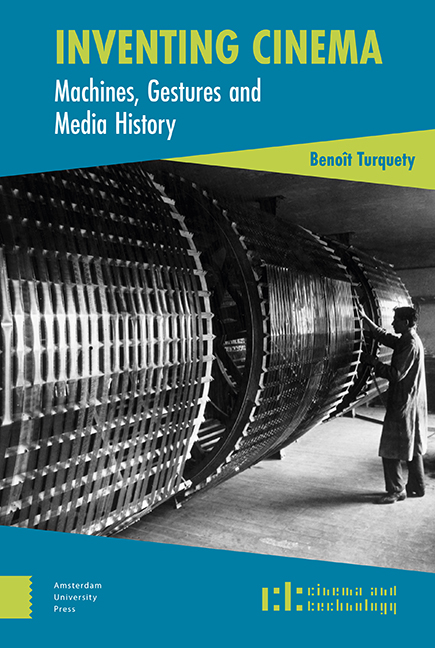Book contents
- Frontmatter
- Dedication
- Contents
- Acknowledgements
- Introduction: The Problems of Digital Cinema
- 1 The Why and How of Machines
- 2 Invention, Innovation, History
- 3 The Invention of the Problem
- 4 The Invention of the Cinématographe
- 5 ‘Natural Colour Kinematography’, a New Cinema Invention : Kinemacolor, Technical Network and Commercial Policies
- 6 Epilogue: From the Trembling of Film to the Stability of the Digital
- Bibliography
- Index
6 - Epilogue: From the Trembling of Film to the Stability of the Digital
Published online by Cambridge University Press: 21 November 2020
- Frontmatter
- Dedication
- Contents
- Acknowledgements
- Introduction: The Problems of Digital Cinema
- 1 The Why and How of Machines
- 2 Invention, Innovation, History
- 3 The Invention of the Problem
- 4 The Invention of the Cinématographe
- 5 ‘Natural Colour Kinematography’, a New Cinema Invention : Kinemacolor, Technical Network and Commercial Policies
- 6 Epilogue: From the Trembling of Film to the Stability of the Digital
- Bibliography
- Index
Summary
Abstract
This last part returns to a consideration of the problems connected with the digital turn. Here, the focus is initially on the perceptual characteristics of early cinema. As in Kinemacolor, the ‘defects’ – the trembling of the cinema image – are not overlooked as minor temporary technical problems, but as major specificities that came to define the medium. Traditional cinema is thus read as belonging to the episteme of the mechanical, where trembling is connected with machines, themselves always moving. ‘Digital cinema’, as a stable medium, thus appears as a result not only of a technological shift, but of an epistemological one.
Keywords: Trembling, modernity, perception, digital cinema, digital technology, media history.
In 1995, in a text that, not at all by chance, addressed the question of colour, Georges Roque remarked that ‘we have undoubtedly not fully grasped the importance that the concept of movement took on for both science and art beginning in the 1880s.’
Naturally, this could only be a statement in hindsight; for people of the day, it was not so much the concept of movement that had the importance described here, but rather movement itself. It was not a change of paradigms; it was a transformation of the world. This suddenly manifest presence of movement was certainly connected, as has frequently been noted, with the rapid evolution of the means of transport in the early twentieth century – automobiles, trains, planes, streetcars, subways – which completely redrew the body's relations with physical and geographic space and created hitherto unseen situations of perception. The latter were not only unprecedented in their regular and passive high-speed conveyance through the landscape, these conveyances also effected – more so than today – a singular kind of jolting, trembling, and shaking of the entire body and thus also the eyes. The connection between these modes of transportation and the cinema was obvious at the time on this point as well, as Jules Claretie remarked, for example, in 1896:
I don't know which physiologist declared that the railways, with their shaking, would in the end displace human brains.
- Type
- Chapter
- Information
- Inventing CinemaMachines, Gestures and Media History, pp. 231 - 248Publisher: Amsterdam University PressPrint publication year: 2019



